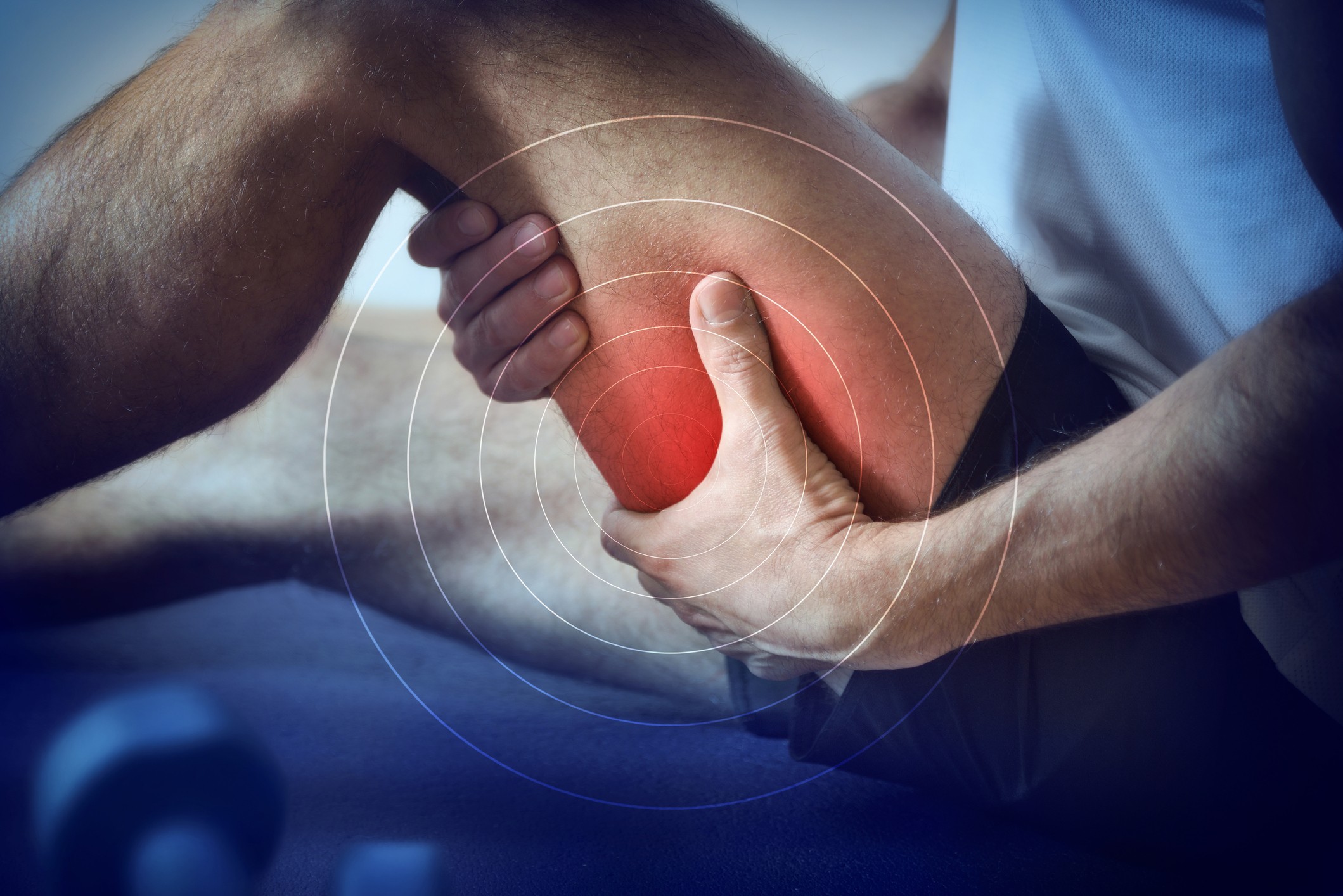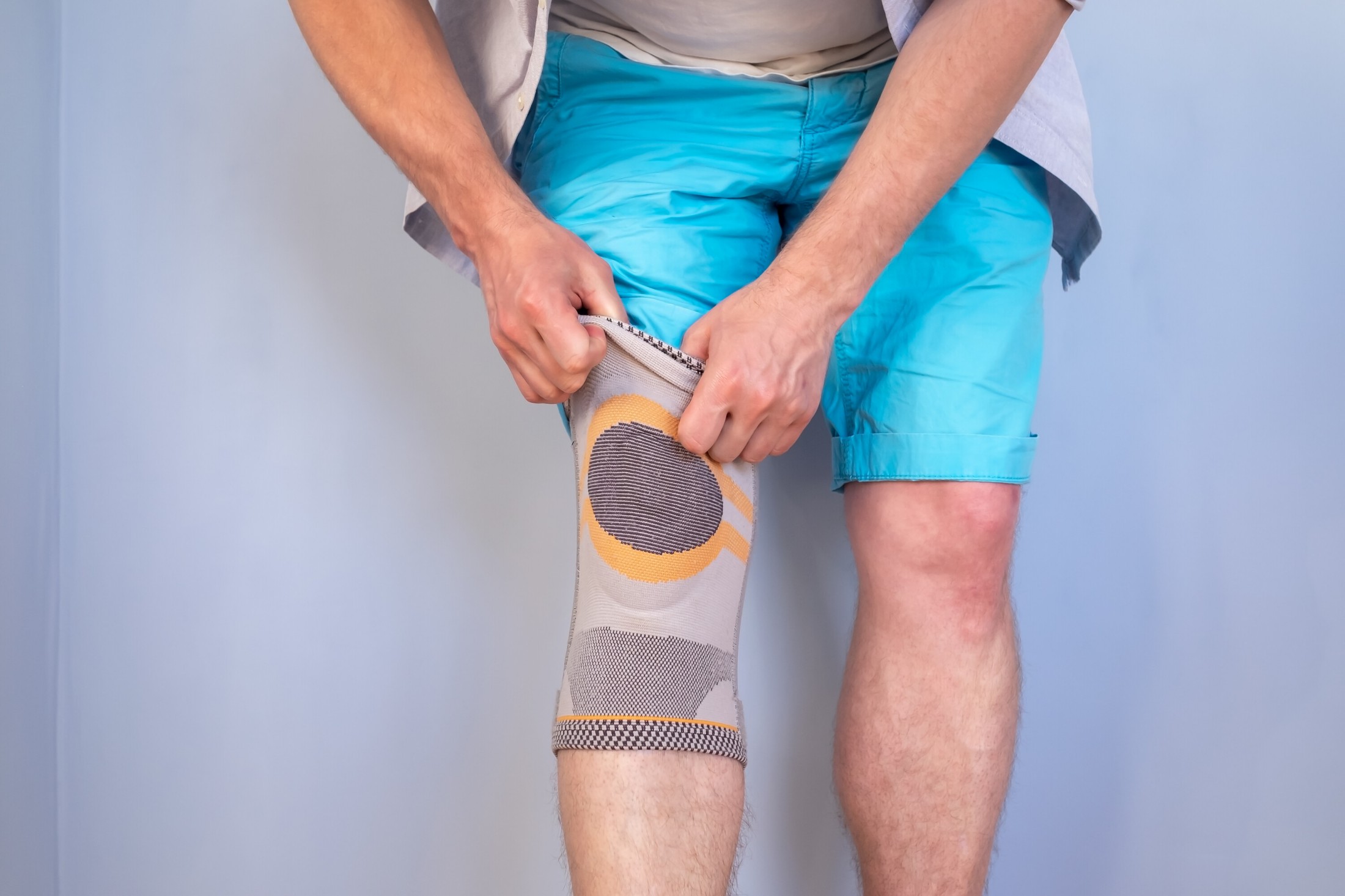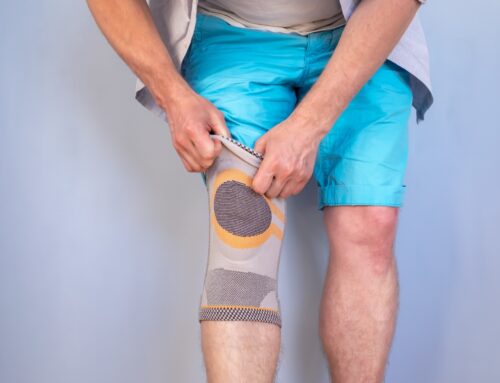Chronic leg fatigue isn’t just about feeling tired after a long walk, it’s that ongoing, heavy sensation in your legs that sticks around, often making simple activities like standing, walking, or even sitting for too long uncomfortable. For many people, it builds up slowly and becomes part of daily life, sometimes brushed off as just “getting older” or “being out of shape.”
The good news? You’re not alone, and it’s often manageable without medication.
What Is Chronic Leg Fatigue?
If your legs regularly feel sore, heavy, or drained, even when you haven’t done anything particularly strenuous, you might be dealing with chronic leg fatigue. It’s not a medical diagnosis on its own, but rather a set of symptoms that point to your legs being overworked, under-supported, or affected by how your body is circulating blood and managing pressure.
The Symptoms
Chronic leg fatigue can show up in different ways, but common symptoms include:
- Heavy or aching legs
That “weighed down” feeling that doesn’t quite go away, even after rest. - Swelling, especially by the end of the day
Fluid buildup around the ankles and calves is a frequent complaint, particularly for people who sit or stand for long periods. - Reduced stamina or leg strength
Tasks like climbing stairs or standing for extended periods may feel harder than they used to.
These symptoms might come and go, or they might be part of your daily routine. Either way, they can be frustrating but often improve with simple lifestyle changes.
Why It Happens
The causes can be simple or more complex, but the approach to managing leg fatigue doesn’t always need to involve medications. In many cases, the right daily habits and support strategies go a long way.
A few common reasons people experience chronic leg fatigue:
- Poor circulation
If blood flow in your legs isn’t as strong as it should be, it can lead to heaviness, swelling, and that tired, sluggish feeling. - Long hours standing or sitting
Staying in one position for too long, whether you’re at a desk or on your feet all day, can put stress on your legs and affect circulation. - Age, weight, or underlying conditions
Natural changes in muscle tone, joint support, or overall health can impact how your legs feel day to day.
Daily Habits That Help Reduce Leg Fatigue
You don’t need a complete lifestyle overhaul to feel better, just a few small, consistent changes can ease the pressure on your legs and help reduce that daily fatigue.
Below are some practical habits you can work into your routine, whether you’re at home, work, or on the go.
Make Movement a Routine
Sitting or standing for too long can lead to muscle stiffness and sluggish circulation. Adding gentle movement throughout your day keeps things flowing and helps prevent that heavy-leg feeling.
- Light stretching throughout the day. Focus on calves, hamstrings, and quads. Even a few standing toe touches or calf raises can help wake up your legs.
- Walking breaks if sitting long hours. Set a reminder to get up every hour. Even a short lap around the room helps activate leg muscles and support better blood flow.
- Flexing feet and ankles while seated. Point and flex your toes, or roll your ankles in circles. It’s a subtle movement that makes a big difference over time.
Elevate Your Legs
Gravity works against your legs during the day, so giving them a break by elevating them can reduce swelling and ease fatigue.
- Try to elevate legs at the end of each day. Aim to prop your legs above heart level for 10–15 minutes. A stack of pillows works just fine.
- Use a footrest or recliner if possible. During downtime, raising your feet even slightly can help relieve pressure from the lower legs.
Stay Hydrated
It’s easy to overlook, but hydration is important for circulation and overall leg comfort. When your body is low on fluids, it can lead to muscle cramps, slower blood flow, and more fatigue.
- Blood thickens slightly when you’re dehydrated, making it harder for your body to circulate it efficiently — especially in your legs.
- Carry a reusable water bottle, add fruit slices for flavour, or set reminders to sip regularly throughout the day.
Sticking to these simple habits can help your legs feel lighter, stronger, and less tired — without relying on medication or complicated routines.
Lifestyle Adjustments that Make a Difference
Some of the most effective ways to manage chronic leg fatigue are changes you can make without any special equipment or medical treatments. Paying attention to what you wear, especially on your feet, can have a big impact on how your legs feel by the end of the day.
Footwear Choices
What you wear on your feet affects far more than just comfort, it helps with posture, circulation, and overall leg fatigue. Shoes with proper arch support, stable soles, and good cushioning can help reduce the daily strain on your legs, especially if you spend long hours walking or standing.
On the other hand, flat or unsupportive shoes like flip-flops may seem easy and convenient but often force your muscles to work harder without offering the structure they need, leading to increased fatigue.
If you’re dealing with chronic leg fatigue or foot discomfort, switching to footwear designed for support can make a noticeable difference. Orthopedic shoes are a great option for those seeking added stability and comfort, especially for individuals who need extra help managing daily leg stress.
Try Graduated Support Socks
Supportive legwear doesn’t need to look or feel clinical. Graduated support socks, sometimes called medical-grade socks, are made to encourage better circulation by applying the most pressure at the ankle and gradually decreasing it up the leg. This gentle compression helps promote healthy blood flow and reduce swelling, which can significantly ease feelings of heaviness and fatigue.
Available in a variety of styles, from subtle everyday wear to athletic options, support socks are easy to fit into your routine. They’re especially helpful during long shifts on your feet, extended travel, or post-activity recovery.
If you’re looking for a simple, effective way to relieve tired legs, compression socks and stockings offer a practical solution that works quietly in the background while you go about your day.
Create a Leg-Friendly Workspace
Whether you work at a desk, on your feet, or a bit of both, your workspace setup can directly affect how your legs feel throughout the day. Making a few small adjustments can ease tension, support circulation, and help prevent that dragging, heavy sensation by the end of your shift.
Set Up a More Supportive Workspace
Your sitting position may not seem like a big deal, but it has a direct impact on how your legs feel throughout the day. Poor posture, dangling feet, or staying in one position too long can all contribute to stiffness, swelling, and reduced circulation, all of which add to chronic leg fatigue.
Make sure your feet rest flat on the floor and your thighs are parallel to it. If your chair height doesn’t allow for that, a small footrest can help bridge the gap. It’s also helpful to shift your sitting position occasionally to keep the leg muscles engaged and prevent pressure from building in any one area.
- Feet rest flat on the floor (or on a footrest)
- Thighs are parallel to the ground
- Chair height allows for neutral posture
- Posture is upright with good back support
- Sitting position is adjusted throughout the day
Consider an Anti-Fatigue Mat
If your job involves standing for long periods, whether you’re in a kitchen, retail setting, or workshop, the type of surface you stand on can make a noticeable difference. Hard floors create constant impact on your joints, leading to discomfort and increased fatigue over time.
Anti-fatigue mats are designed to absorb that impact and provide gentle cushioning under your feet. This helps promote subtle leg movement, better posture, and reduced pressure on your knees and lower back. It’s a simple addition that can significantly ease leg fatigue during long standing shifts.
- Used in areas where standing is required for long periods
- Provides visible cushioning and support
- Encourages natural leg and foot movement
- Helps reduce joint strain and lower back pressure
- Mat is placed on a flat, stable surface for safety
Know When to Seek Advice
Most of the time, chronic leg fatigue can be managed with a few smart changes to your daily routine. But if your symptoms are sticking around or getting worse, it’s worth checking in with a healthcare provider to rule out any underlying issues.
Some signs might indicate that it’s more than just tired legs and getting a professional opinion can help you find the right solution sooner rather than later.
- Persistent swelling or pain
If your legs are consistently swollen, especially if only one leg is affected, or you experience ongoing pain that doesn’t ease with rest, it’s best to get it looked at. - Numbness or tingling
A “pins and needles” sensation or regular numbness may point to nerve-related issues or circulation problems. - Leg fatigue worsening despite lifestyle changes
If you’ve been active, hydrated, and wearing supportive gear, but still feel progressively worse, a consultation can help you get back on track.
You don’t need to panic, but if your symptoms don’t improve or seem out of the ordinary, talking to a healthcare professional is a smart next step. They can help determine whether there’s something more going on and offer options tailored to your specific situation.
Finding Relief for Chronic Leg Fatigue
Chronic leg fatigue can feel frustrating, especially when it starts interfering with your day-to-day comfort. But the good news is that meaningful relief often comes from small, consistent changes, not drastic overhauls or prescriptions.
From wearing supportive shoes and elevating your legs to adjusting your workspace or trying graduated support socks, these simple steps can make a noticeable difference over time. You don’t need to do everything at once. Start with one or two habits that fit easily into your routine, and build from there.
With a little awareness and a few thoughtful adjustments, you can help your legs feel lighter, stronger, and more energized every day.
Share This Story, Choose Your Platform!
Table of Contents
We specialize in orthotics, body braces, and compression wear tailored to your unique needs in Toronto. Reach out to us at info@caremed.care or call 416-782-5353 to book your fitting and consultation.
Experience the difference of customized solutions designed just for you.











